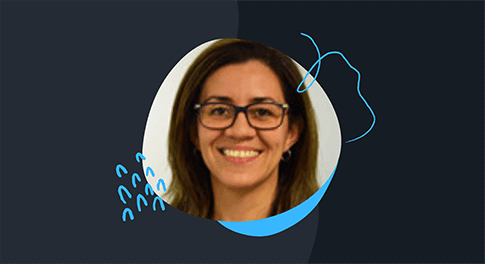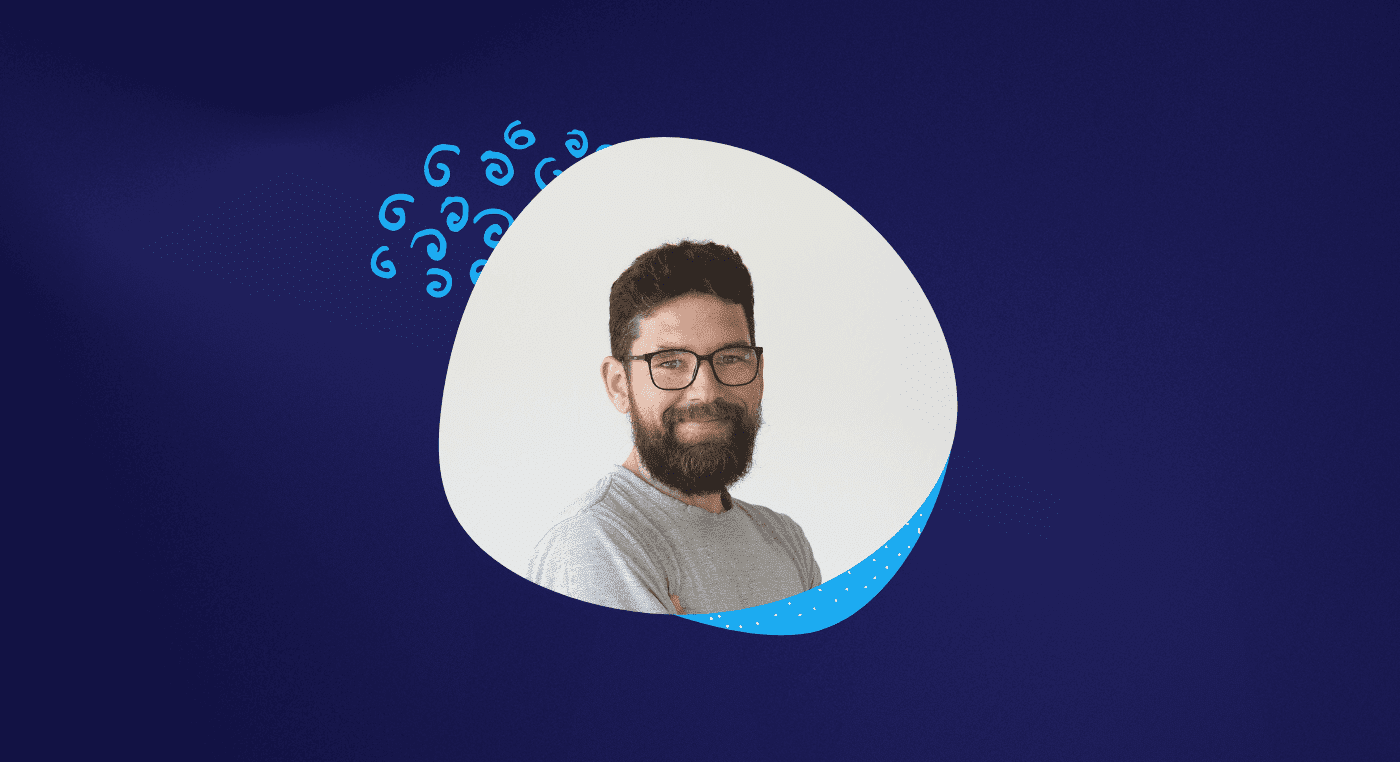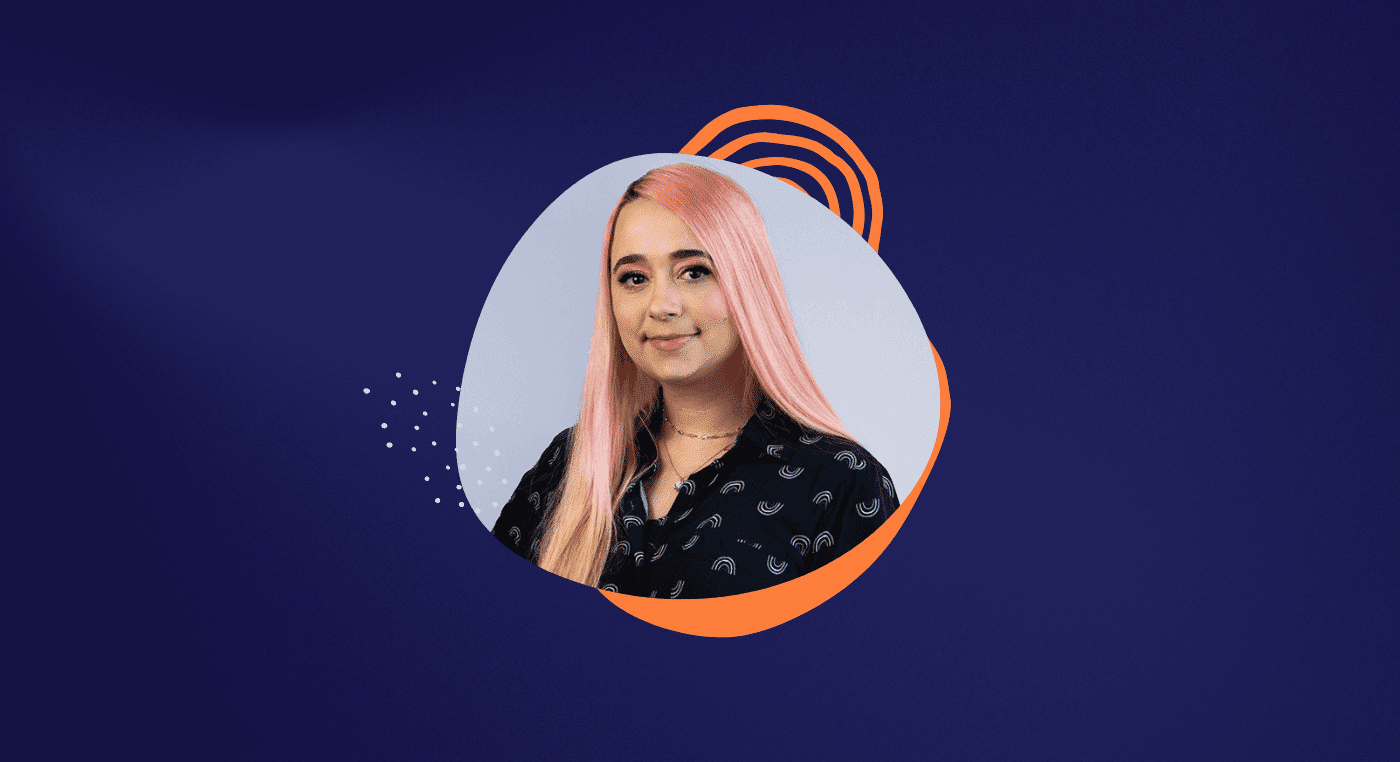Fabia tells us how she developed a portfolio as early as during the first levels of the Mastering Interface Design program and how Aela’s mentorship was essential for her to get a job offer in UX Design.
Fabia, please tell us about yourself and your career path as a Designer
Before I got into Design, my experience was with customer service. But I got interested in images and Photoshop, so I decided to study Graphic Design and graduated in 2013.
Along with college, I was always looking for extra knowledge with courses and books, and I was already researching UX Design and UI.
However, I couldn’t find much information about it, let alone courses on the subject at that time. And I had questions, for example, if I needed to know how to code to be a UX Designer because if this were the case, it would be a dealbreaker for me.
And that’s when Aela opened the first Mastering Interface Design – MID class. Then I could understand what Interface Design was all about, from the basics to the thousands of possibilities the UX market offers.

You changed from Graphic Design to UX Design and started working alone in a startup. How was this experience?
It was a big change for me. I was used to working with offline, pre-printed, and specific guidelines.
Then I found myself dealing with UIs, all digital, and I had to specify how to show, how to do it, where to start, and the rules. But I like challenges and try to give my best in everything I do.
There were many challenges, especially in a startup where everything is urgent, and you do many different things at once.
For example, in the interview, they wanted someone who could also set up screens. And in my portfolio (something that is very important to do), there wasn’t a specific UI project, but there were other tests I had done, so it turned out I could fill their need.
The MID program gave me a solid foundation for UI and UX processes. And that was crucial for me to resolve design challenges and prepare for interviews.
I always used the MID exercises and projects to show my skills and the step-by-step development of a project.
Reading Tip: How I Landed My First UX Design Role – Interview With Master Interface Design Students

How did you put together your first portfolio since you didn’t have much experience with real projects?
As I said, I always sought knowledge from different places, and something that helped me a lot was the network at the MID.
It’s great to have this kind of contact and ask questions to professionals in the field who are more experienced or have different experiences than you.
Besides that, I was building my portfolio in UX during the MID program, so I was basing everything on what I was learning, the meticulous guidance of Aela’s mentors, and the help of the Aela Community on Slack.
So, everything I was doing, I used as a resource to build my portfolio and present it in the interviews.
You are now working in a multinational company. How was the process for you to get this 2nd job offer in UX?
I spent five months at the startup. I was the only UX Designer, the routine was very hectic, and often there was no time left to refine and develop all the processes, which made me frustrated.
Also, I didn’t have a clue when or if I would be able to put together a team with other designers. These issues made me work on my resume and portfolio and focus on other job openings.
After applying for several other positions, I decided to apply for one at Atech, a large technology company within the Embraer group, which is where I work today.
I am a Junior UX Designer and work a little bit with UI. It’s quite challenging, with specific knowledge of air traffic control, defense, etc.
In the interview, I used the same strategy. I showed them everything I had, exercises, and drafts, and they really liked it because it was what they were looking for, someone who did the processes manually and not so much on software.
It’s been a great experience. It is a place where everyone participates and shares experiences, talks about their processes, and helps each other.
Reading Tip: Why Are Balanced Teams So Important To UX?

Changing areas can create uncertainty and doubt. How did you deal with that?
Change is always a challenge. But I never let fear get in my way. When I was in sales and switched to design, it was the same thing, take it or leave it.
You have to study and go all in. It worked for me. The same thing happened when I switched from Graphic Design to UX Design.
The circumstances might be a bit different, but you have to try and not be afraid.
Also, all the experience is valid for the other roles you play. For example, I spent a long time working in customer service, which today helps me communicate with others and empathize with users when running interviews or tests.
What advice would you give someone who wants to pivot to UX Design?
I think a portfolio is essential in this area. Even if the person doesn’t have a concrete/real project, show everything you have: exercises, hand-made drafts – everything can help initially.
Another point is LinkedIn. Today I realize how important it is to have a professional profile for networking and to present your work there.
Attending events in the field is also very interesting. Meeting people, talking to other professionals, and reading books about UX and Design.
There’s so much free content on the internet; staying up-to-date and searching for experiences is important.







